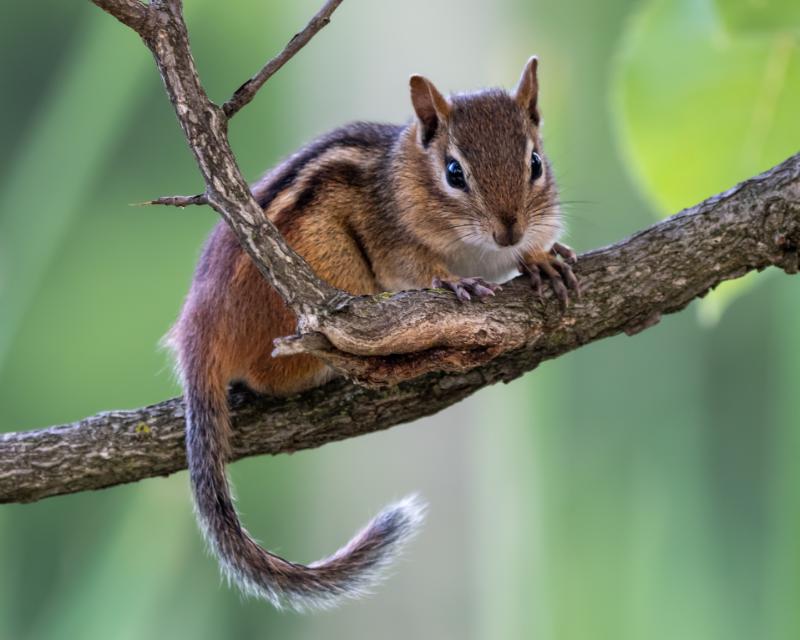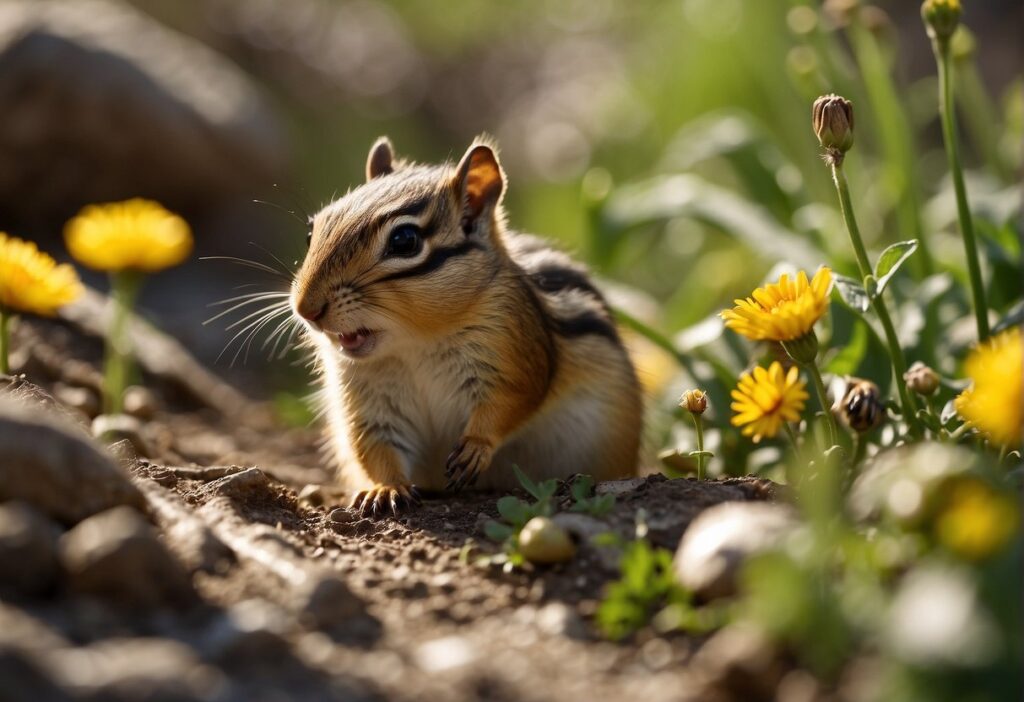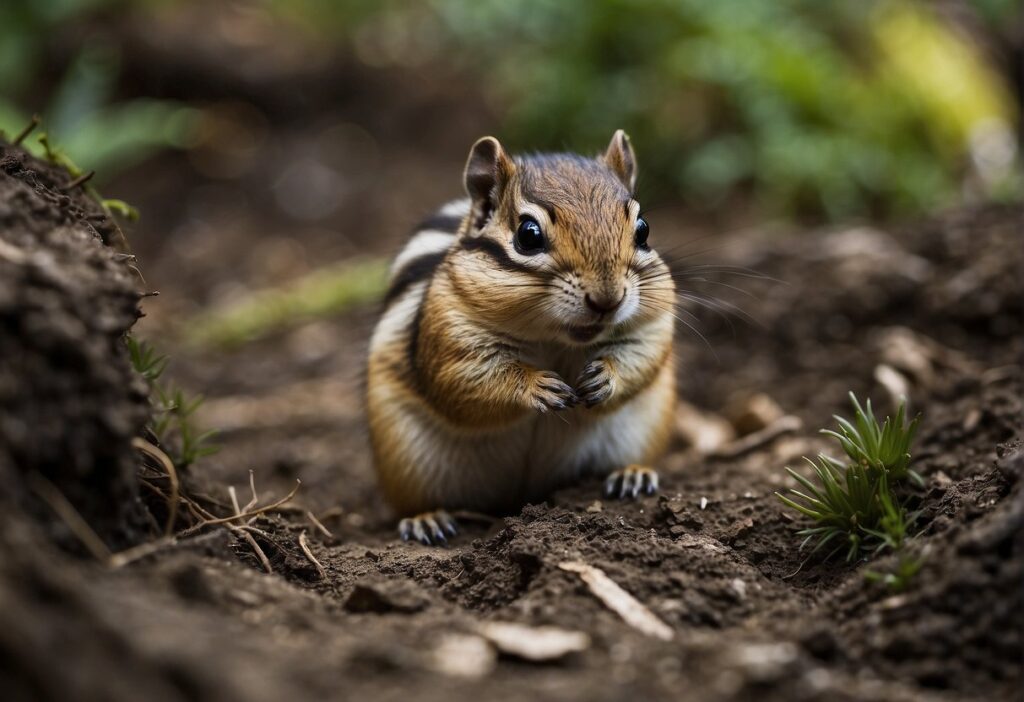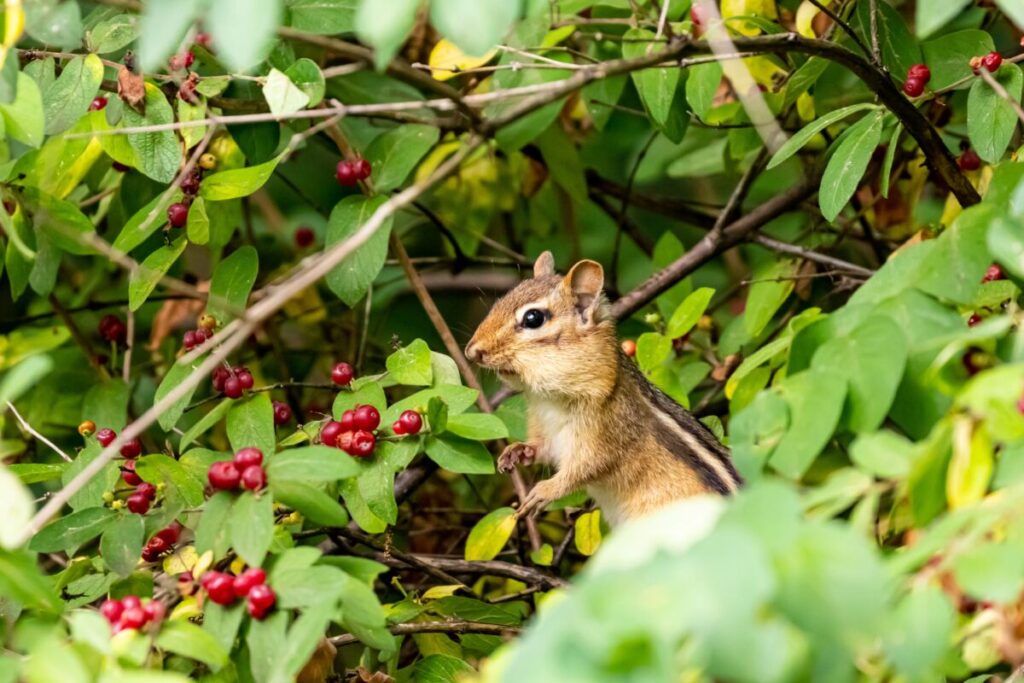Chipmunks, the small, striped rodents familiar to many, undergo a period of reduced biological activity known as hibernation during the colder winter months. Like a deep sleep, this state allows them to conserve energy when food resources are scarce and temperatures are low. As winter wanes and signs of spring emerge, chipmunks awaken from their hibernation.
Typically, this transition occurs around mid-March, aligning with the retreat of winter weather. Nonetheless, should winter conditions persist, their emergence can be delayed, sometimes until April, as chipmunks’ wake-up schedule is intrinsically linked to the environment’s cue of warmer weather.
The behavior of chipmunks regarding hibernation is intriguing because it illustrates their adaptation to seasonal changes. Unlike some animals that hibernate in a continuous, uninterrupted state, chipmunks experience periods of torpor interspersed with brief phases of wakefulness.
During these moments of arousal, they may consume stored food and attend to their bodily functions. This pattern is repeated throughout the winter, ensuring their survival until more favorable conditions in spring encourage their full return to active life.
Understanding the hibernation patterns of chipmunks provides insight into the complexity of seasonal survival strategies in the animal kingdom. Their reliance on external temperature cues to dictate the timing of their arousal from hibernation underscores the importance of weather patterns in the natural cycles of wildlife behavior. Consequently, the phenological study of chipmunks’ hibernation contributes to the broader knowledge of how animals adapt and endure through the changing seasons.
Do Chipmunks Hibernate?
Chipmunks have developed a fascinating adaptation to cope with the harsh conditions of cold winter months. This section examines the intricacies of their survival strategy, which is often mistaken for hibernation.
Defining Hibernation

True hibernation is characterized by a prolonged state of inactivity and metabolic depression in endotherms, whereby body temperature and heart rate drop dramatically to conserve energy during periods when food is scarce. Most animals that hibernate retreat to a den or similar shelter, becoming largely unresponsive to the world around them.
The Hibernation Process in Chipmunks

Though commonly believed to hibernate, chipmunks actually undergo a similar but distinct process known as torpor. During the colder months, chipmunks retreat to their underground burrows and periodically enter a state of torpor. This state allows them to lower their body temperature and heart rate, but unlike hibernation, they wake intermittently to feed from their stored cache of food and to eliminate waste.
- Frequency of Torpor: Chipmunks awaken every few days.
- Purpose: The awakening periods are essential for feeding and maintaining bodily functions.
Physical Changes During Hibernation

As chipmunks enter these torpor bouts, they experience a reduction in physiological activity:
- Body Temperature: Can decrease to match the ambient temperature of their den closely.
- Heart Rate: Slows significantly to conserve energy.
By employing torpor rather than true hibernation, chipmunks demonstrate a remarkable adaptation strategy that ensures their survival through the winter season while still allowing them regular periods of activity for sustenance and bodily function.
Signs of Spring: Chipmunks Emerging

With the arrival of spring, chipmunks conclude their winter hibernation. The warming climate prompts their emergence as they seek food and reconnect with their habitat.
Weather Influence on Emergence

The precise timing of when chipmunks awaken from their winter slumber is closely linked to climatic conditions. In areas where spring temperatures rise earlier, chipmunks may emerge as soon as March. However, their appearance is often delayed until April in regions with colder weather. This transition is marked by a steady increase in external temperatures, which signals to the chipmunks that it is time to resume their activities.
Foraging for Food after Hibernation

Once emerge, chipmunks’ primary focus is to replenish their energy reserves. During the first few days after awakening, they actively forage for food, with a keen preference for nuts and seeds that are abundant in spring. The availability of these food items is critical, as chipmunks depend on them to restore the weight lost during the months of hibernation. These industrious rodents spend much of their time post-hibernation searching and hoarding food, ensuring survival in the new season.
See Related: Does God Love Animals? The Surprising Answer Revealed In Scripture
Chipmunk Behavior and Activity Post-Hibernation

As spring arrives, chipmunks emerge from hibernation, marking a flurry of heightened activity in eastern chipmunks as they enter their breeding season and focus on restoring their depleted energy reserves.
Mating and Reproduction

Peak Mating Time: Chipmunks begin their mating rituals after hibernation ends, typically around mid-March to April. The chipmunks eat urgency to reproduce is evident, as the window for mating is relatively short and is a critical period for the continuation of the species.
Breeding Cycles: The breeding season sees males visiting multiple burrows to find receptive females, leading to male competition. Conversely, females will breed 1-2 times per burrow per season, generally producing litters of 4 to 5 offspring.
Rebuilding Energy Reserves

Foraging: Post-hibernation foraging becomes a crucial task for female chipmunks. They fervently seek out seeds and nuts, which are staples of their diet, to replenish their bodies and prepare for the energetic demands of breeding and raising their young.
Nest Maintenance: The chipmunks’ burrows, their secure hideouts, also require attention. Any needed repairs are made to ensure the safe rearing of offspring and shelter against predators and elements. Their subterranean havens comprise extensive tunnel networks, often housing individual food stores essential for survival in the cold weather and unpredictable seasons ahead.
Predicting the Timing of Hibernation and Emergence

Hibernation in chipmunks is a critical survival strategy influenced by environmental factors. Understanding these predictors is essential for anticipating when chipmunks retreat into and emerge from hibernation.
Predictors of Hibernation and Emergence
Hibernation represents a period of reduced physiological activity, allowing chipmunks and squirrels to conserve energy during scarce food availability. It typically begins when the temperature drops to around 40°F, signaling chipmunks to withdraw to their burrows. These creatures adapt their hibernation patterns to the climate, with emergence generally expected around mid-March to April, depending on the seasonal temperatures.
- Activity: Before hibernation, chipmunks engage in fervent foraging to store enough food for their hibernation period. The timing of their emergence from hibernation is influenced by the internal energy stores they have accumulated and the external temperature gradient. Observations indicate that chipmunks experience intermittent periods of wakefulness during hibernation to feed on these reserves, which can affect the duration of their hibernation.
- Weather Patterns: Chipmunks base the beginning and end of their hibernation on environmental cues such as temperature and daylight hours. A warmer-than-usual autumn may delay the start of hibernation, while an extended winter may push back emergence.
- Food Availability: The supply of food sources in autumn affects the onset of hibernation. Abundant food allows chipmunks to prepare more efficiently, potentially entering hibernation earlier. Conversely, with the arrival of spring and increased food accessibility, chipmunks emerge to replenish their depleted energy supplies.
Chipmunks do not hibernate in the traditional sense but instead experience torpor, a lighter, episodic form of hibernation. During colder months, they enter this state periodically, sometimes waking to eat stored food before returning to their low-energy state. The length and frequency of these torpor bouts vary with the individual and environmental conditions.
Understanding these factors provides insight into the complexity of hibernation and the resilience of chipmunks as they synchronise their life cycles with the rhythmic patterns of nature.
The Ecological Role of Chipmunks in Forest Ecosystems

Chipmunks play a vital and multifaceted role in forest ecosystems, particularly through seed dispersion and bird predator interactions. Their activities directly influence the diversity and distribution of forest vegetation and contribute to the dynamic balance within their habitat.
See Related: The Science of Frog Starvation: How Long Can They Go Without Eating
Impact on Seed Dispersion and Predation

Seed Dispersion: Chipmunks contribute significantly to the spread of seeds within a forest. They gather and hoard many seeds, which are essential to their diet. These rodents are selective and often store seeds in numerous caches throughout the forest. Not all stored seeds are retrieved, leading to the growth of new plants in diverse locations. This seed-caching behavior fosters forest regeneration and contributes to the spatial distribution of plant species.
- Advantages of Seed Caching:
- Enhances plant species dispersion
- Aids in forest regeneration
- Promotes genetic diversity within plant populations
Predation: As small mammals, chipmunks form a crucial link in the food web of forest ecosystems. They serve as prey to various predators, including birds of prey, mustelids, and snakes. Their role as a food source for predators is essential in maintaining a balanced predator-prey dynamic within the environment. The presence of chipmunks can indicate the overall health of a forest ecosystem, as they are both consumers and consumed, reflecting the intricacies of ecological interactions.
Related Resources:
- Demand for Cashmere Triggers Ecosystem Collapse on the Mongolian Plateau
- Are Bears Color Blind? Unveiling the Truth About Their Vision
- Top Interesting Facts About Giant Pandas


